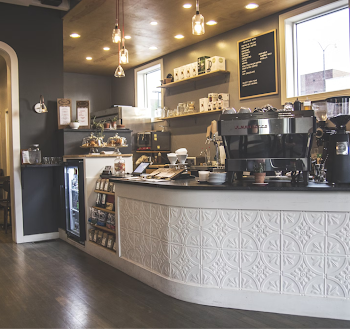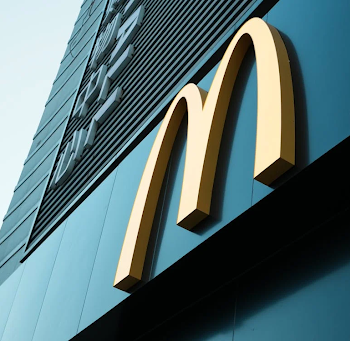
Starting a restaurant involves many important decisions. One key aspect is managing your finances effectively. Have you considered restaurant equipment leases as a viable option?
These leases can help reduce initial costs for your business startup. Renting equipment allows you to access high-quality tools without a huge investment. You can choose from various leasing options based on your needs.
Understanding these leases can simplify your journey to owning a restaurant. Let’s explore the different types of restaurant equipment leases available.
Operating Lease
An operating lease is a common type of agreement for restaurant equipment. In this leasing option, you rent the equipment for a specific period without intending to buy it at the end of the lease. This means you get to use the latest equipment without the burden of ownership.
An operating lease has lower monthly payments compared to other leasing types. It helps you save money for other business expenses.
Since the leasing company often handles maintenance and repairs, you can focus on running your restaurant. This flexibility makes operating leases a great choice for new restaurant owners looking to manage their costs.
Capital Lease
A capital lease, a finance lease, is a common option for restaurant owners looking to get equipment. A capital lease gives you the option to own the equipment at the end of the lease term.
This type of lease has higher monthly payments, but part of these payments goes toward the purchase price of the equipment. It makes it an investment in your business.
While you are responsible for maintenance and repairs during the lease period, this option allows you to build equity in the equipment over time. If you plan to use the equipment long-term and value owning it, a capital lease can be a smart financial choice for your restaurant.
Finance Lease
A finance lease is an alternative option for restaurant owners seeking vital equipment while managing their finances. This lease allows you to use the equipment for an extended period, usually with the option to buy it at the end of the term.
With a finance lease, you can distribute the cost of restaurant equipment financing for startups over several years. It makes it more manageable for your budget. While you’ll continue to handle maintenance and repairs, the payments often include some amount towards eventual ownership of the equipment. This structure is beneficial for new restaurants needing reliable tools without the upfront costs associated with purchasing.
Master Lease Agreement
A master lease agreement is a comprehensive contract that allows restaurant owners to lease multiple pieces of equipment under a single agreement. This type of lease can simplify management, as it combines several leases into one, making it easier to keep track of payments and terms.
In a master lease, you have the flexibility to add or remove equipment as your restaurant’s needs change. It is great for growing businesses.
This arrangement often includes a set fee that covers all equipment and services listed. It helps you budget more effectively. A master lease agreement can provide convenience and efficiency.
Short-Term Lease
A short-term lease is a flexible option for restaurant owners who may need equipment for a limited time. This type of lease lasts from a few months to a year. It makes it ideal for seasonal businesses or projects that need special equipment temporarily.
For instance, if you’re hosting a pop-up restaurant or have a catering event coming up, a short-term lease allows you to access necessary equipment without a long-term commitment. The payments are usually higher every month compared to longer leases, but you enjoy not having to manage long-term obligations. This option is perfect for those who want to test new equipment or adapt to changes in their business needs.
Long-Term Lease
A long-term lease is a great option for restaurant owners who need equipment for an extended period, usually more than one year. This type of lease allows you to secure essential restaurant tools without the burden of a large financial loan upfront.
With a long-term lease, you can enjoy predictable monthly payments that fit your budget. It makes financial planning easier.
This option often includes maintenance and repair services. It allows you to focus on running your business rather than on equipment issues.
By committing to a long-term lease, you ensure that your restaurant can operate with reliable equipment. It contributes to your success in the competitive food industry.
Dollar Buyout Lease
A dollar buyout lease is a straightforward leasing option for restaurant owners who want to own their equipment outright at the end of the lease term. In this arrangement, you lease the equipment for a set period, usually around 3 to 5 years. In the end, you have the option to buy the equipment for one dollar.
This means that throughout the lease, you enjoy lower monthly payments. When the lease ends, you can take ownership of the equipment for a minimal cost.
This type of lease is ideal for businesses that plan to use their equipment for a long time and want to avoid higher purchase prices. It combines affordability during the lease with a clear path to ownership.
Sale and Leaseback
A sale and leaseback agreement is a unique financing option for restaurant owners. In this arrangement, you sell your equipment to a leasing company and then immediately lease it back for use in your restaurant.
This process allows you to free up cash previously tied to the equipment. It can be used for other critical business expenses, such as renovations or marketing.
Although you no longer own the equipment, you maintain its use, ensuring your operations continue. The lease payments are generally manageable, making it easier to budget. This option is beneficial for restaurants looking to improve liquidity while still using the necessary equipment for day-to-day operations.
Learn the Different Types of Restaurant Equipment Leases
Exploring restaurant equipment leases can be very beneficial. They provide flexibility and help manage cash flow effectively. These leases allow you access to modern tools without hefty upfront costs.
Using commercial services for leasing can simplify your operations. Each type of lease offers unique advantages tailored to your needs.
By understanding these options, you can make informed financial decisions. This knowledge helps ensure your restaurant’s long-term success and growth in a competitive industry.
Did you find this article helpful? If so, check out the rest of our site for more informative content.



